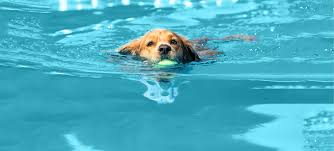Have you ever taken your furry friend to the beach or a swimming pool, only to find out they’re more interested in lounging on the shore than taking a dip? Or perhaps you’ve witnessed your pup paddle happily in the water, loving every moment of it. The question arises: do all dogs like swimming?
It’s a common assumption that all dogs are natural-born swimmers, but the truth is a bit more nuanced. While many dogs enjoy splashing around, there are others who aren’t so keen on the idea of getting wet. Let’s dive deeper into this topic and debunk the myth that all dogs are water enthusiasts.
Understanding Canine Swimming Instincts
Dogs, as descendants of wolves, have a varied relationship with water. Some breeds, like the Labrador Retriever and the Newfoundland, have a natural affinity for swimming, thanks to their webbed feet and water-resistant coats. These breeds were historically bred for tasks like retrieving waterfowl, so swimming comes naturally to them.
On the other hand, there are breeds that are less inclined to swim. Breeds with short legs or barrel-shaped bodies, such as Bulldogs and Dachshunds, may find swimming more challenging due to their body structure. Similarly, dogs with dense coats like Malamutes or Huskies might find swimming uncomfortable due to the added weight of wet fur.
Factors Influencing a Dog’s Attitude Towards Swimming
- Breed Traits: As mentioned, breed traits play a significant role. Breeds with a history of water-related activities are more likely to enjoy swimming.
- Early Experiences: A dog’s early experiences with water can shape their attitude towards swimming. If a puppy has positive experiences with water during their socialization period, they’re more likely to enjoy it as adults.
- Individual Personality: Just like humans, dogs have unique personalities. Some are adventurous and love trying new things, while others are more cautious and prefer sticking to dry land.
- Health Conditions: Certain health conditions or physical limitations can affect a dog’s ability or willingness to swim. Arthritis or joint problems, for example, might make swimming uncomfortable for some dogs.
Tips for Introducing Your Dog to Swimming
If you want to see if your dog enjoys swimming, here are some tips for introducing them to the water:
- Start Slow: Introduce your dog to shallow water first, allowing them to get comfortable with the sensation of being wet.
- Use Positive Reinforcement: Encourage your dog with treats and praise to associate swimming with positive experiences.
- Provide Support: Use a flotation device if necessary, especially for dogs who are new to swimming or those who are less confident in the water.
- Respect Their Preferences: If your dog shows signs of fear or discomfort, don’t force them. Respect their boundaries and try again another time.
While many dogs do enjoy swimming, it’s not a one-size-fits-all activity. Just like humans, dogs have their own preferences and personalities. Some are water-loving enthusiasts, while others prefer to stay dry. Understanding your dog’s individual needs and preferences is key to ensuring they have a happy and fulfilling life, whether it involves swimming or not. So, the next time you head to the beach or the pool with your furry friend, remember to respect their choices and enjoy the time together, whether it’s in the water or on the shore.
